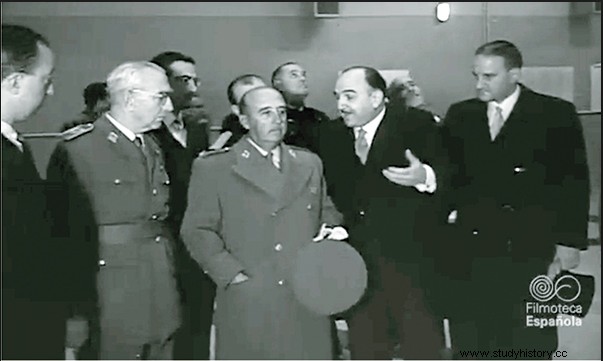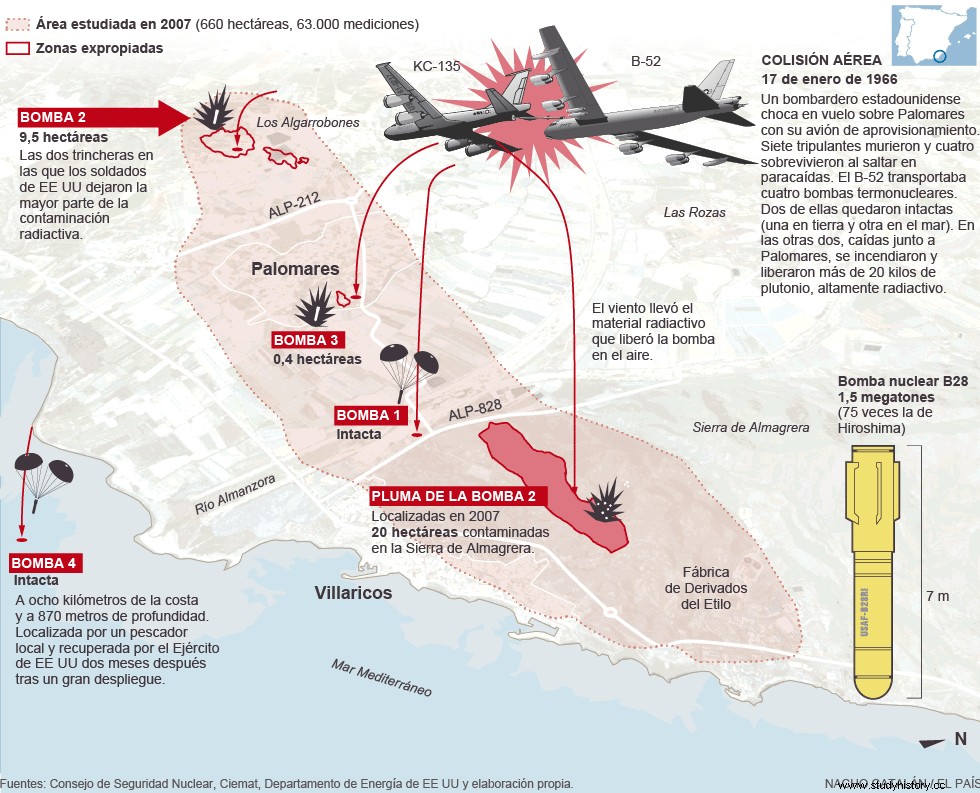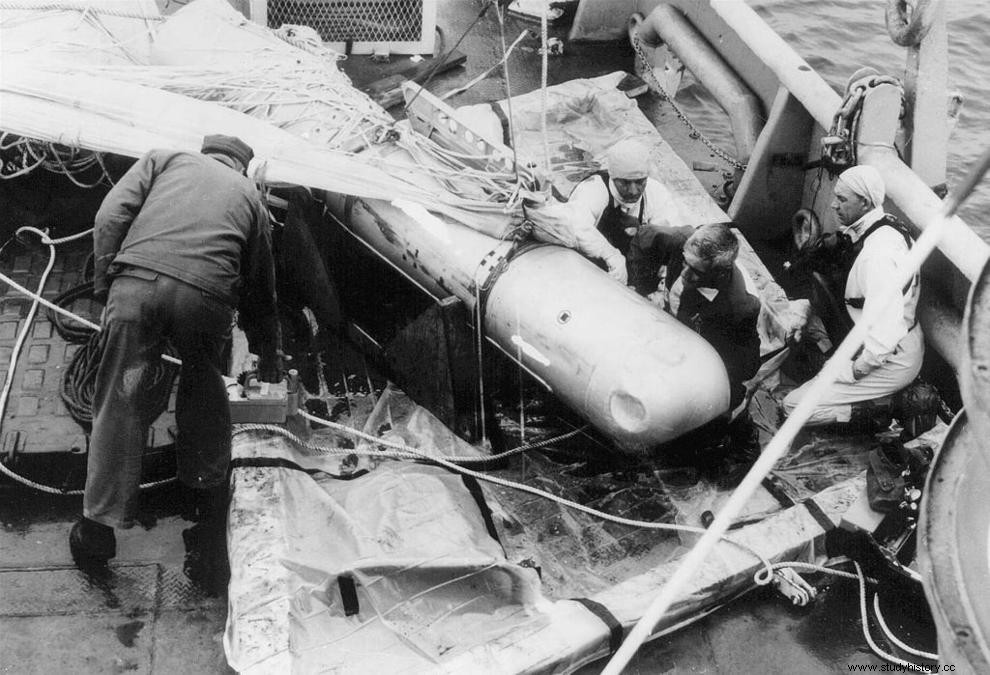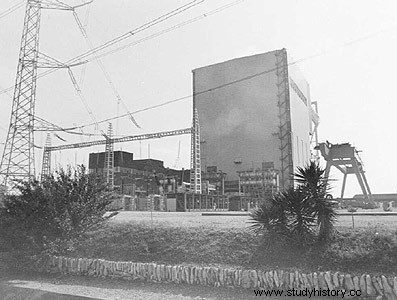One of the most unusual chapters in contemporary Spanish history in the second half of the 20th century was the attempt to obtain its own nuclear weapons. The project emerged in the postwar years and lasted throughout the Franco regime, going through various ups and downs depending on Spain's foreign relations and Franco's fear of taking the decisive step. The first milestone dates back to 1948 when the Atomic Research Board was created. This body gave way in 1951 to the Nuclear Energy Board. Its function was, within the framework of the autarky and in the midst of the Cold War, to achieve an autonomous development of this energy, officially with a civil purpose but, secretly, also military.

Shortly after, in 1955, Spain signed a nuclear cooperation agreement with the United States within the Atoms for Peace program. . This program had been promoted since 1953 by US President Dwight D. Eisenhower to promote the peaceful use of nuclear energy and its control through the creation of the IAEA –International Atomic Energy Organization–. Through this channel, the United States provided nuclear technology to various countries, including Spain, for use in research or civil applications. In fact, many Spanish scientists and engineers went to study in North American institutions.
The result of these relations was also the construction of the first nuclear reactor in Spain, the JEN-1, using American technology and using enriched uranium 238, although it was impossible to obtain material for nuclear weapons from it. With this new impulse, the National Nuclear Energy Center was created in 1958, which, although it did not have a military character, was directed by them. The consequence of this development in research was the avant-garde position that Spain reached in the 1950s, thanks mainly to the work of Rear Admiral and physicist José María Otero de Navascués.
Military interest in nuclear energy had increased since 1956, the date of Morocco's independence and the moment from which the new State exerted pressure on Spanish territories in Africa. The attitude of the United States in the Ifni conflict (1957-58), prohibiting the use of military material ceded to Spain, also favored the idea of obtaining autonomous nuclear weapons as a deterrent against any possible confrontation with the new neighbor to the south. . For Spain, which did not belong to NATO, the possession of this weaponry was also an element of international prestige and a means of controlling the strategic axis defined around the line formed by the Balearic Islands, the Strait and the Canary Islands.
All the investigative work carried out until then was completed in 1963. General Agustín Muñoz Grandes, vice president of the government, ordered the Nuclear Energy Board to carry out a study on the possibilities of developing a nuclear weapon without alerting the international community. It was the beginning of the “Island Project”. Despite its disappointing beginnings, the project remained in force thanks to the support of the aforementioned Muñoz Grandes and Carrero Blanco. In 1964 the project was ready, also counting on French support since De Gaulle was in favor of European defensive independence for which he believed it was necessary for Spain to have nuclear weapons.
Curiously, the Palomares accident would change the initial lethargy of the project. On January 17, 1966, a North American tanker plane collided in the air, above the vertical of the population of Almería, with a B-52 bomber of the same nationality that was carrying four thermonuclear bombs (H or hydrogen bombs) of 1.47 megatons each approximately 75 times more powerful than the one that destroyed the Japanese city of Hiroshima.

The Spanish nuclear technicians, led by the military physicist Guillermo Velarde, were able to collect and analyze the remains of the fallen bombs. The results obtained gave a new impulse to the research to carry out the project since they made it possible to unravel the keys to the manufacture of hydrogen bombs, which until then were only in the hands of the United States, the USSR, France and China. Despite this, Franco decided not to promote the project for fear of US sanctions. However, neither was it abandoned nor were the doors closed for its continuation; In fact, Spain did not sign the Nuclear Non-Proliferation Treaty (TNPN), created in 1968. In that same year, in addition, the first Spanish nuclear reactor was installed at the Madrid headquarters of the Nuclear Energy Board.

The studies and tests carried out until then made it possible, beginning in the 1970s, to make the manufacture of nuclear weapons viable, but the means did not exist. The Zorita nuclear power plant (Guadalajara), which had come into operation in 1969, and the Santa María de Garoña (Burgos), which had done so in 1971, were based on North American technology and it was not possible to extract weapons fuel from them.
The opportunity to extract plutonium for military use did not occur until 1972, when the Vandellós I nuclear power plant (Tarragona) came into operation, built with French technology and capable of producing it. Furthermore, Spain had reserves of natural uranium. At that time the Spanish option focused on the manufacture of a plutonium bomb and not uranium. Obtaining uranium 325 was much more complicated and technical and economic resources were needed that Spain did not have at the time. However, plutonium 239 could be obtained from a small nuclear reactor.

Political support for the project increased when Carrero Blanco became president of the government in June 1973. The Army thought that in order to defend Spain, a true military treaty with the United States should be achieved, drawn up face to face. And if that did not happen, our country should have its own nuclear deterrent force. At the end of that year, Velarde reported that Spain could manufacture three nuclear bombs a year. With that possibility on the table, Carrero met with the US Secretary of State, Henry Kissinger, posing the dichotomy of a new treaty or the development of nuclear weapons. Kissinger refused to finalize any agreement. The next day, December 20, 1973, ETA assassinated Carrero in an attack.
But neither his death nor that of General Franco in 1975 finalized the project. North American pressure for Spain to sign the TNPN continued but without achieving its objective. On the contrary, by that time –1977– Spain was already capable of manufacturing enough plutonium to produce 23 nuclear bombs a year.
The coming to power of Adolfo Suárez in 1976 did not mean the interruption of the project either. This only occurred in 1981, at a delicate juncture for Spain –increasing number of attacks, decomposition of the Union of the Democratic Center, February coup d'état, etc.– and with strong pressure from US President Jimmy Carter for Spain to sign the TNPN.
The Islero project was definitively liquidated when the PSOE, in government since 1982, decided to abandon it in exchange for integration into the European Economic Community and when the country had already joined NATO. In October 1987, Spain signed the TNPN and the project was forgotten.
The plan to equip Spain with nuclear weapons must be placed within the framework of the Franco dictatorship. A very nationalistic regime with little sympathy for the United States, although the political interests of both countries led them to rapprochement. Its weapons project is not related so much to the Cold War as to the objective of ensuring valid defensive autonomy for the entire national territory. This objective was not achieved with the integration into NATO, since it left out the defense of Ceuta and Melilla.
Bibliography.
Benavente, R.P. (11/13/2016). Islero Project, the atomic bomb that Spain could have had during the Franco regime, Evernote. El Confidencial .
Cardeñosa, B. (2016). The Spanish atomic bomb. History of Old Iberia, 137 .
Munoz Bolaños, R. (2014). The Islander project. The Spanish atomic bomb. Retrieved from http://anatomiadelahistoria.com/2014/01/el-proyecto-islero-la-bomba-atomica-espanola/
Rodriguez, A. (2016). When Spain searched for the atomic bomb. Time, 1779 .
A. Soto (Producer). (2017, 01/14/2017). The atomic bomb of Spain:Islero Project [Audiopodcast]. Retrieved from http://mvod.lvlt.rtve.es/resources/TE_SRDOCU/mp3/1/4/1484397483141.mp3
Velarde, G. (2016). Island Project. When Spain was able to develop nuclear weapons . Cordoba:Editorial Guadalmazán.
